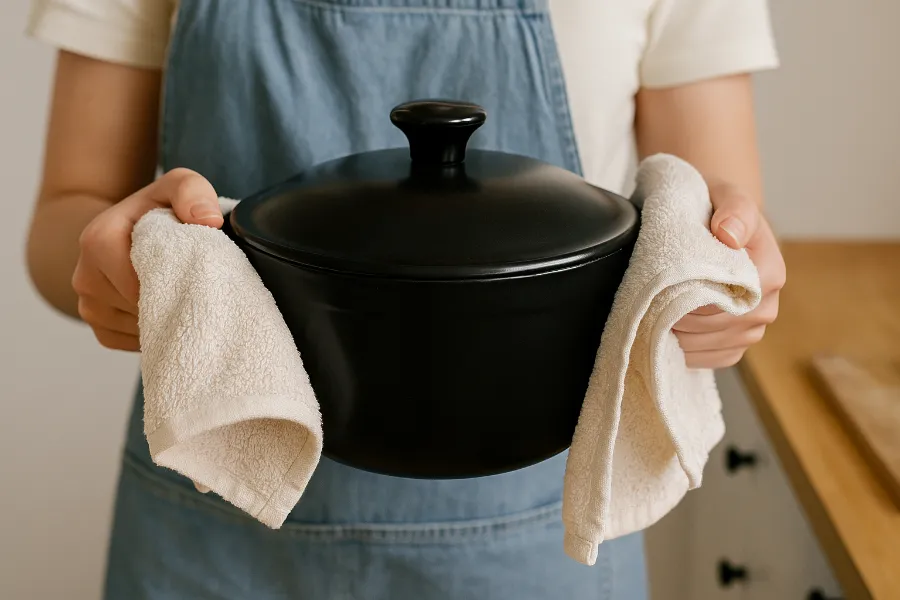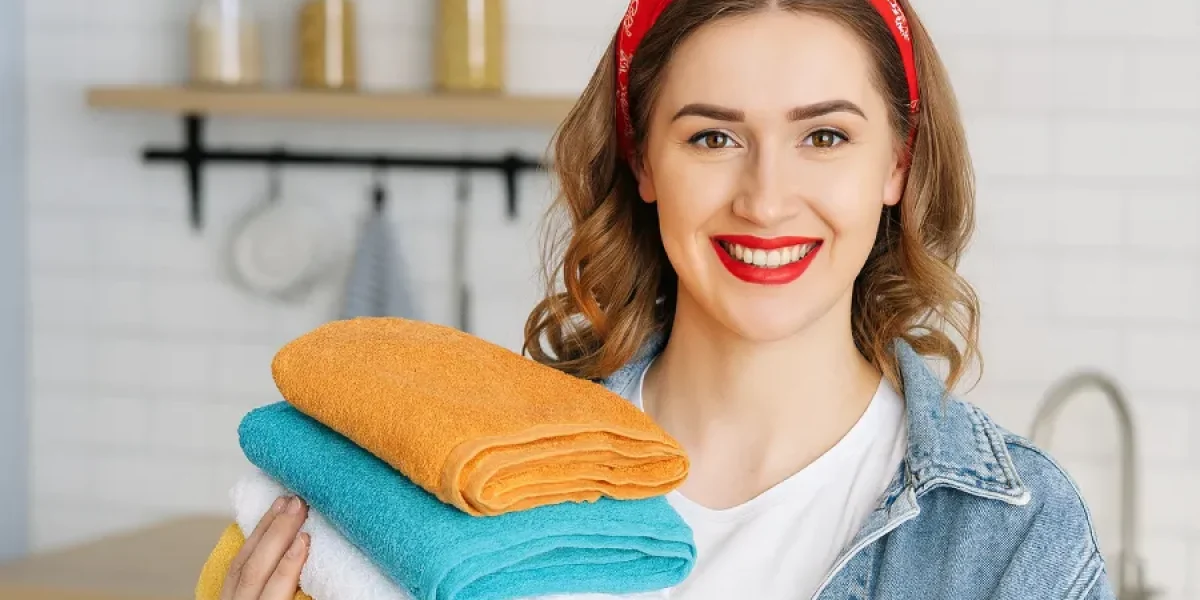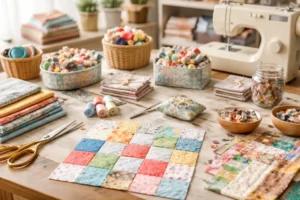When I first discovered terry towels, I didn’t realize how much they’d change my daily routine. From cleaning up spills to replacing paper products, they became my “go-to” tool around the house. In this article, I want to walk you through what makes terry towels so special and how they can serve as wash cloths, cloth napkins, kitchen towels, cotton cloths, dish towels, cloth pads, cloth sponges, absorbent towels, kitchen wipes, and reusable wipes.
I’ll share what I’ve learned about their weave, how I use them, how I wash them, and how they’ve helped me cut waste and save money.
Wash Cloths
When people hear “wash cloths,” they often picture a small square of soft fabric used in the bathroom. But terry towels can fill that role beautifully. I keep a few trimmed terry towel squares in my bathroom as wash cloths. They’re gentle on skin, quick to absorb water, and easy to rinse out.
Because terry towels have the characteristic loops that trap water, they often outperform flat-weave wash cloths in terms of staying moist yet not soggy. The looped structure also gives them a slightly plush feel that’s kind to skin.
Cloth Napkins
One of my favorite repurposes: turning terry towels into cloth napkins. At first, it sounds weird—towels at the dinner table? But in practice, it’s a game changer.
- I cut terry towels into moderate squares (e.g. 10″×10″) to use as napkins.
- They’re more absorbent than typical napkins, so when my plate edges drip or a child messes, they handle it.
- Softness matters: terry towels don’t scratch surfaces or irritate hands.
- Bonus: they add a rustic, homey feel to the table.
Kitchen Towels
In my kitchen, kitchen towels are everywhere: hanging from hooks, folded near the sink, tucked near the stove. Terry towels shine in this role for several reasons:
- They soak up splashes and spills instantly.
- They’re thick enough to wring and upcycling without feeling limp.
- They hold up under heat (e.g. passing over a hot pan briefly) better than paper.
- They double as a gentle scrub-layer for pots (if the weave is robust).
Compared to thinner kitchen towels or flour-sack cotton, terry towels just feel more “workhorse.”
Cotton Cloths

It’s no secret: most terry towels are essentially cotton cloths with looped weaving. The cotton fiber is what gives terry towels their softness, breathability, and absorbency.
When cotton gets wet, it becomes stronger (unlike many synthetics that weaken). The cotton loops in terry fabric increase surface area and allow the towel to capture more moisture.
When buying or making terry towels, aim for quality cotton—long-staple or heavier weight—because that directly impacts how long they last and how well they perform.
Dish Towels
One of the most frequent tasks in my home: drying dishes. That’s where dish towels come in. Terry towels make great dish towels because they:
- Leave fewer streaks on glassware.
- Absorb a lot of water so you don’t have to constantly wring out.
- Are thick enough to protect your hand when handling hot plates.
- Survive frequent washes and rough scrubbing.
Cloth Pads
Here’s a fun twist: I make small cloth pads from leftover terry towel pieces for cleaning tasks or even beauty uses.
For example:
- I cut terry squares (3″–4″) and layer them for scrubbing or wiping tough spots in the kitchen or bathroom.
- For skincare, softer terry can serve as reusable makeup-removal pads or facial pads.
- These cloth pads are inexpensive to make, especially from towel scraps, and you’ll likely have extras if you frequently use towels.
Cloth Sponges
Another clever reuse: creating cloth sponges from terry towels. Instead of synthetic sponges that deteriorate or trap bacteria, my DIY cloth sponges are:
- Two or three layers of terry stitched together (sometimes with a middle layer of mesh or scrubbier fabric).
- Machine-washable and durable.
- Gentle enough for nonstick cookware, but robust enough to handle stuck-on grime.
Because terry is naturally looped, it mimics some of the “grit” of a sponge while remaining soft.
Absorbent Towels
If absorbency is your goal, terry towels are among the best options. Their looped structure creates extra surface area to catch and hold water. The longer or denser the loops, the more absorbent the towel tends to be.
When I pick new terry towels, I look for heavier weights (measured in GSM or ounces per square yard) or ones with tight loop density. These become my “high-absorbency” towels, reserved for big spills, drying large pans, or bath use.
Kitchen Wipes
I ditched single-use paper towels for a while, and I haven’t looked back. Kitchen wipes made from terry towels are now part of my everyday system:
- I cut larger towels into smaller squares (6″–8″).
- They live in a little jar by the sink.
- Use them for wiping counters, catching crumbs, cleaning up juice spills.
- Toss them into the laundry after 1–2 uses.
Reusable Wipes
Expanding beyond the kitchen, I also use terry towels as reusable wipes around the house:
- Dampen them with a multipurpose solution (vinegar + water, or gentle cleaner) and they handle windows, surfaces, or dusting.
- Because they’re durable, I can wash them with the rest of my laundry without worry.
- Over time, they soften and soften—often getting better with age.
I color-code my reusable wipes (e.g. one color for kitchen, one for bathroom) to avoid cross-contamination.

How Terry Towels Are Made
Terrycloth (also called terry toweling) is woven with looped piles—uncut loops that stand up off the base fabric. Those loops face upward (or both sides) and are what trap moisture.
Quality differs depending on loop height, loop density, yarn quality, and finishing techniques. Longer loops = more fluff and absorbency (but slower drying); tighter loops = quicker drying but less plush feel.
My Favorite Routine for Caring for Terry Towels
Over years of use, I’ve settled into a simple care routine that helps my terry towels stay soft, absorbent, and long-lasting:
- Wash warm or cold. I avoid hot water unless there’s grease or heavy stains.
- Skip fabric softeners and dryer sheets. They coat fibers and reduce absorbency.
- Dry on low heat or line-dry. High heat can damage loops or cause shrinkage.
- Occasional deep clean. Every few weeks, I run a hot wash with vinegar or baking soda to strip residues.
- Avoid overloading washer. Give towels room to move so water and detergent circulate well.
- Shake them out before folding. Helps fluff loops and speeds drying.
The Differences That Matter: Terry Towels vs Flat Towels
- Loop structure: Flat towels lack the looped pile, so they absorb less and feel thinner.
- Texture & grip: Terry loops help grip surfaces and trap dirt or moisture, whereas flat weaves might slide.
- Softness & feel: Terry has a plush, cushioned feel, which flat weaves often lack.
- Drying time: Flat towels often dry faster; terry tends to stay damp longer due to its thickness.
How I Use Terry Towels Throughout My Home
Here’s a glimpse of my daily habits with terry towels:
- In the kitchen, I keep one for spills, one for dishes, and cut several into kitchen wipes.
- In the bathroom, I reserve a set for wash cloths and hand towels.
- Everywhere else, I use them as reusable wipes—dusting, wiping surfaces, or even swiping off pet paws.
- When old or worn, I cut them into cloth pads or cloth sponges before relegating them to utility rags.
Each towel lives multiple lives before retirement. That’s the beauty of using terry towels.
Final Thoughts
If you’re looking for a textile upgrade that’s versatile, durable, and eco-friendly, terry towels are hard to beat. Over the years, I’ve seen them replace many one-use items: they act as wash cloths, cloth napkins, kitchen towels, cotton cloths, dish towels, cloth pads, cloth sponges, absorbent towels, kitchen wipes, and reusable wipes across my home.
They’re not perfect—sometimes slower to dry, sometimes heavier—but when you balance that with their strength, softness, and reusability, they become indispensable.
FAQs
Most terry towels are woven from 100% cotton, though some blends exist. The looped weave makes them extra absorbent compared to flat fabrics.
Wash cloths are simply smaller terry towels used for personal care. Both share the same looped fabric, but towels are larger and more versatile.
Yes! Cut or fold terry towels into smaller squares for rustic-style cloth napkins. They’re reusable, eco-friendly, and highly absorbent at the dinner table.
Wash in warm or cold water, skip fabric softeners, and tumble dry on low or line dry. Deep clean occasionally with vinegar or baking soda to restore absorbency.
Yes, thanks to their looped weave. Terry towels soak up more liquid and handle heavy-duty spills better than thin flat-weave dish towels.
Definitely. Cut terry towels into smaller squares and use them as reusable wipes. They reduce waste and can be washed and reused for years.
With proper care, terry towels can last several years. Their cotton loops become softer with use while maintaining excellent absorbency.













